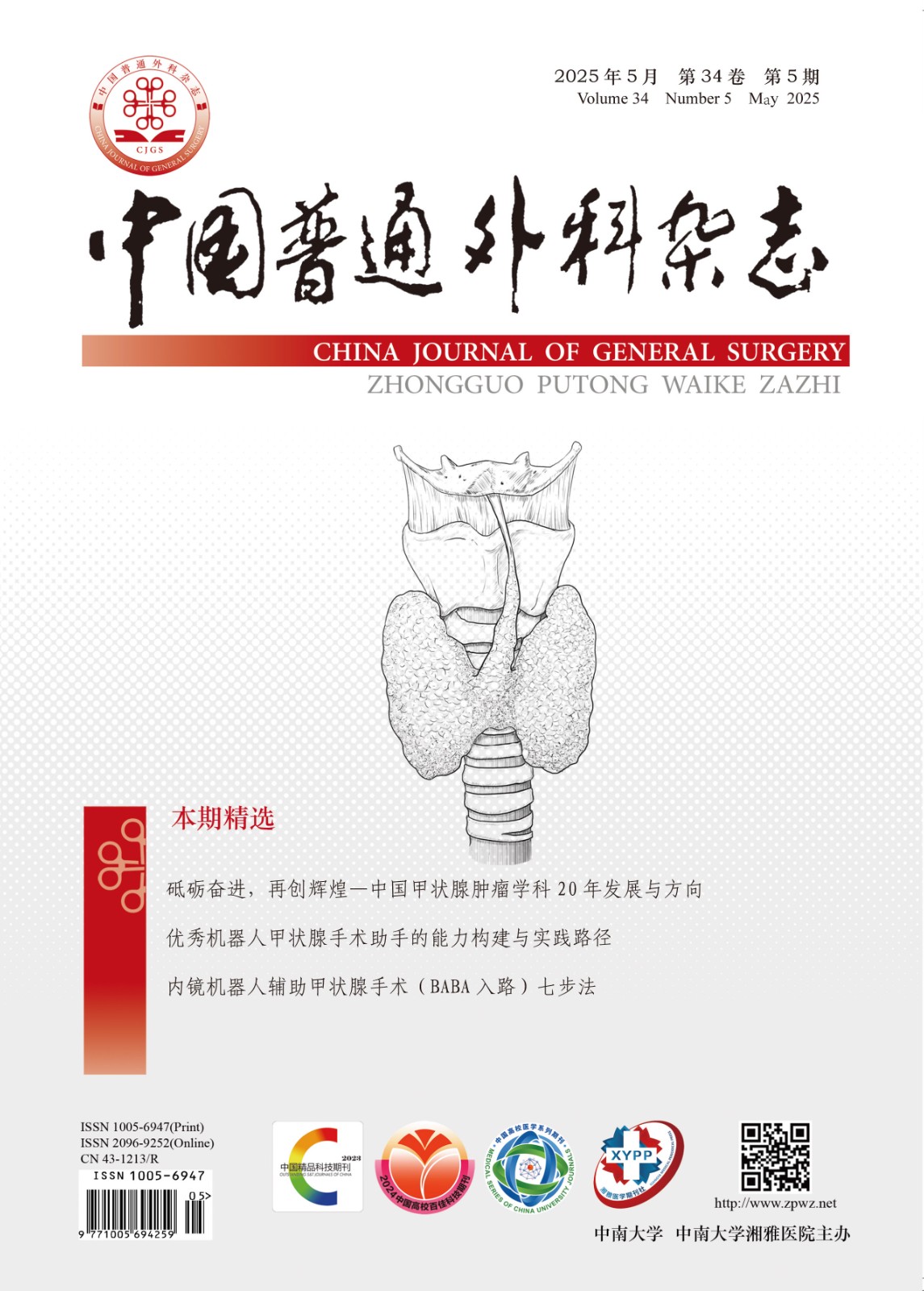Abstract:Background and Aims The current diagnosis of neck lymph node metastasis in papillary thyroid carcinoma (PTC) relies mainly on ultrasound and fine-needle aspiration cytology (FNAC). However, both methods have subjectivity and limitations. This study was conducted to investigate the application value of detection of thyroglobulin in the washout fluid from fine-needle aspiration biopsy (FNA-Tg) under ultrasound guidance for cervical lymph node metastasis in PTC patients.Methods The data of 144 patients with pathologically confirmed PTC were retrospectively analyzed. Preoperatively, all patients underwent serum thyroglobulin (Tg) testing, and suspicious cervical lymph nodes were subjected to ultrasound-guided FNAC and FNA-Tg testing. The postoperative final pathological results were considered as the gold standard. The sensitivity, specificity, accuracy, positive predictive value, and negative predictive value of FNAC, FNA-Tg, and their combination in diagnosing neck lymph node metastasis in PTC patients were compared. Receiver operating characteristic (ROC) curves were plotted for each diagnostic method, and the area under the ROC curve (AUC) was calculated to determine the optimal diagnostic threshold for the quantitative parameter FNA-Tg.Results A total of 176 lymph nodes were examined in 144 PTC patients. Among them, 81 lymph nodes were diagnosed as metastatic PTC and 95 lymph nodes were non-metastatic. The serum Tg and FNA-Tg levels in the metastatic lymph node group were 28.84 (7.42-84.22) ng/mL and 500 (142.56-500) ng/mL, respectively. In the non-metastatic lymph node group, the serum Tg and FNA-Tg levels were 20.11 (9.57-38.30) ng/mL and 0.10 (0.10-0.29) ng/mL, respectively. There was no statistically significant difference in serum Tg between the two groups (Z=1.878, P=0.062), while there was a statistically significant difference in FNA-Tg between the two groups (Z=10.981, P<0.001). The AUC of ROC curve for FNA-Tg in diagnosing metastatic PTC lymph nodes was 0.964 (95% CI=0.937-0.992, P<0.001), with the optimal diagnostic cut-off value of 4.79 ng/mL. The AUC of ROC curve for FNAC in diagnosing metastatic PTC lymph nodes was 0.840 (95% CI=0.777-0.903, P<0.001). When FNA-Tg and FNAC were used together to diagnose metastatic PTC lymph nodes, the AUC of ROC curve was 0.960 (95% CI=0.927-0.994, P<0.001). The diagnostic sensitivity, specificity, accuracy, positive predictive value, and negative predictive value in diagnosing metastatic PTC lymph nodes were 81.48%, 85.26%, 83.52%, 82.50%, 84.38% for FNAC, and 92.59%, 93.68%, 93.18%, 92.59%, 93.68% for FNA-Tg, respectively. When FNA-Tg and FNAC were used together, the values were 96.30%, 95.79%, 96.02%, 95.12%, and 96.81%. There were statistically significant differences in sensitivity, accuracy, and negative predictive value between FNAC and FNA-Tg (χ2=4.432, P=0.035; χ2=7.798, P=0.005; χ2=4.228, P=0.040). However, there was no statistically significant difference in specificity and positive predictive value (χ2=3.576, P=0.059; χ2=3.768, P=0.052). and all diagnostic indicators were improved by the combination of FNA-Tg and FNAC.Conclusion FNA-Tg measurement is an objective quantitative diagnostic method that has high diagnostic value in detecting cervical lymph node metastasis in PTC. It is superior to FNAC, and when FNA-Tg measurement is combined with FNAC, it further enhances the diagnostic performance.


























































